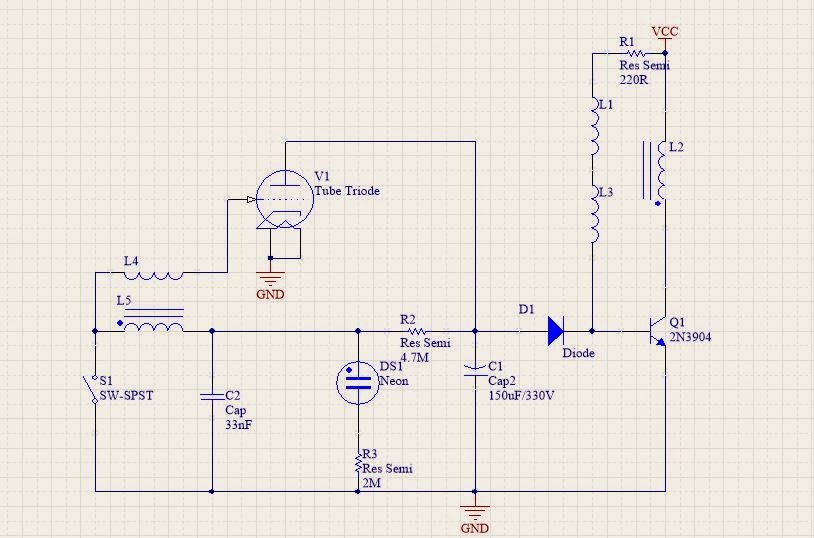In cameras, they have small battery with 3 volts of AA sized battery or with 3.7 volts of the Lithium Ion battery. But even with these very small voltage it gives very big flash. How this can be possible.
The flash we see comes from a flash tube filled with xenon gas.
These tube works with extremely high voltage, the xenon flash tube works with about 300 volts and to trigger the flash it requires about 2000 volts. But from small voltage it requires some circuit for generating very high voltage and the voltage is stored in a big capacitor generally >300 volts and about 150uF to 300uF.
Here Vcc is is 1.5 v or 3v. The first transformer is formed by L1,L2 and L3. This transformer has very high turn ratio and give output about 400 volts on the high side of transformer ie in L1 and L3 side. First from the base current flows and turns ON the transistor Q1 and current flows from L2 due to the flux generated with inturn create opposite flux and induces opposite voltage in the L1 side only a small amount of voltage is fed to base. The induced opposite voltage goes to very low to -400 volts and diode D1 no rectifies it and clipps off the positive voltage and acts like peak detector and charges capacitor to C1 to voltage bout 330 volts .
The oscillation frequency is about 10 Khz thats why we here some small sharp humming noise when flash is charging in camera.
When Capacitor c1 charges to full voltage Neon bulb lits up indicating flash is charged. Small capacitor c2 also charges to 330 volts and then when shutter button is pressed ie s1 is closed the voltage in c2 discharges very quickly which give a very small pulse in primary coil L5 and while secondary in L4 has very high number of turns and generate about 2kV for small time. This voltage is given to gate or trigger of xenon tube which turns on the tube and all the voltage of c1 is discharged and give a very high intensity of white light, which we call it flash.
The flash we see comes from a flash tube filled with xenon gas.
These tube works with extremely high voltage, the xenon flash tube works with about 300 volts and to trigger the flash it requires about 2000 volts. But from small voltage it requires some circuit for generating very high voltage and the voltage is stored in a big capacitor generally >300 volts and about 150uF to 300uF.
Here Vcc is is 1.5 v or 3v. The first transformer is formed by L1,L2 and L3. This transformer has very high turn ratio and give output about 400 volts on the high side of transformer ie in L1 and L3 side. First from the base current flows and turns ON the transistor Q1 and current flows from L2 due to the flux generated with inturn create opposite flux and induces opposite voltage in the L1 side only a small amount of voltage is fed to base. The induced opposite voltage goes to very low to -400 volts and diode D1 no rectifies it and clipps off the positive voltage and acts like peak detector and charges capacitor to C1 to voltage bout 330 volts .
The oscillation frequency is about 10 Khz thats why we here some small sharp humming noise when flash is charging in camera.
When Capacitor c1 charges to full voltage Neon bulb lits up indicating flash is charged. Small capacitor c2 also charges to 330 volts and then when shutter button is pressed ie s1 is closed the voltage in c2 discharges very quickly which give a very small pulse in primary coil L5 and while secondary in L4 has very high number of turns and generate about 2kV for small time. This voltage is given to gate or trigger of xenon tube which turns on the tube and all the voltage of c1 is discharged and give a very high intensity of white light, which we call it flash.

No comments:
Post a Comment